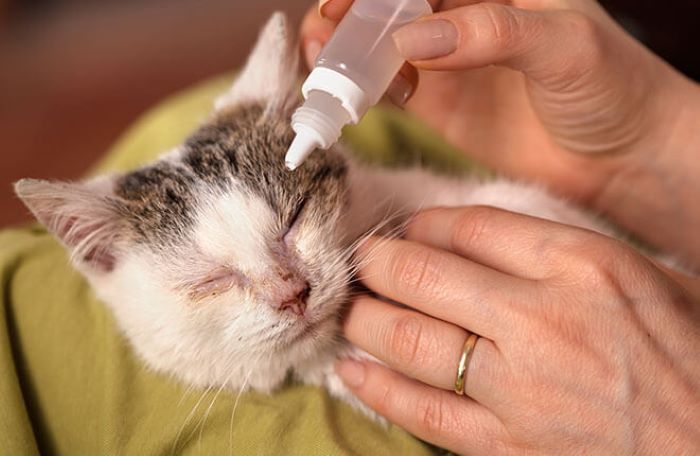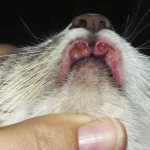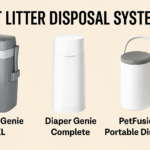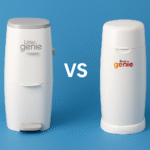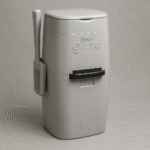Inflammation of the thin, transparent mucous membrane lining the inner portion of the eyelids and front part of the sclera is termed conjunctivitis. Conjunctivitis is the most common cause of “red eyes” in cats.
Other signs seen with conjunctivitis include discharge, swelling, and pain. The type of discharge present can sometimes give a clue as to the underlying cause of the conjunctivitis.
For instance, a watery discharge can indicate irritation from an allergy, virus (canine distemper or feline rhinotracheitis), or contact with dirt or dust; a mucuslike discharge often links the problem to abnormal tear formation (“dry eye”) or to a bacterial infection, either primary or secondary to any of the causes previously mentioned.
Because conjunctivitis can be secondary to other problems, diagnostic tests performed by veterinarians should be directed at identifying any underlying causes. Corneal staining using a fluorescent stain is usually performed to determine whether the cornea is affected.
In cases of conjunctivitis that don’t respond to conventional therapy, a bacterial culture or sensitivity test should be performed to be sure treatment measures being used are correct. Treatment of conjunctivitis is aimed at treating or eliminating any inciting causes, and at controlling the localized inflammation.
If dust or pollens are the source of the conjunctivitis, daily flushing of the eyes with a sterile saline solution designed for use in the eyes or daily application of a sterile ophthalmic lubricant can help reduce the irritation caused by these offenders.
Ophthalmic drops or ointments containing antibiotics are necessary if a bacterial infection is present. In addition, ophthalmic preparations containing steroids can be used to reduce the inflammation present, provided the surface of the cornea is intact.
Preparations containing both antibiotics and steroid compounds for use in the eyes are readily available for pets through a prescription from a veterinarian.

